Enjoying Lisbon
Portugal’s capital is the perfect city break destination in Western Europe
The western most capital in Europe, Lisbon, is one of the world’s oldest cities dating back to the 12th century. Along the years, it has been reigned over by the Phoenicians, the Greeks, the Carthaginians, the Romans and even the Moors. Lisbon became the first true World City as the port city for the Portuguese discoveries and explorers, Vasco de Gama and Prince Henry the Navigator.
Lisbon is recognised as a global city because of its importance in finance, commerce, media, entertainment, arts, international trade, education and tourism. The city is served by three funiculars, as the center of Lisbon is built on seven hills which makes driving and cycling a little challenging but provides stunning vistas from every angle.
When travelling to Lisbon, you will discover a city full of authenticity where old customs and ancient history intermix with cultural entertainment and hi-tech innovation. Being on the Atlantic coast means fresh fish and seafood can be found all over the city, making it a dream destination for foodies.
Must-Sees in Lisbon
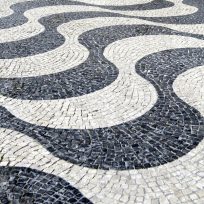
Calçada Portuguesa
One of Lisbon’s trademarks and oldest features. It is skilfully hand-made and especially beautiful as it reflects the light that falls on it. Walk around Lisbon to discover the many different types of patterns.
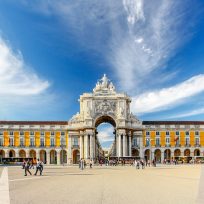
Praça do Comércio
One of the largest squares in Europe, and your starting point for exploring the city. Various attractions are accessed through this square which once housed the palace of Lisbon before an earthquake 250 years ago.
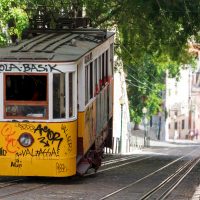
Elevadoras of Lisbon
Each of Lisbon’s three funiculars is unique to their neighborhood as they lead to breath-taking views. They all kept their original, beginning-of-the-20th-century characteristics so take a ride and wander around.
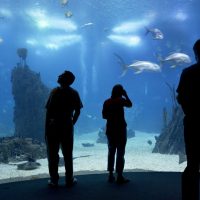
Oceanário de Lisboa
Engage with underwater and surface environments at the ‘best aquarium in the world’ (according to TripAdvisor) and the largest salt-water aquarium to meet over 8,000 marine creatures living in different habitats.
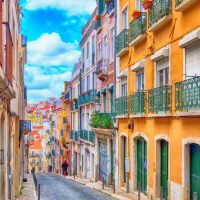
The Alfama
A culturally-rich part of Lisbon, full of charm in every corner. The wonderful sights here are a product of the fishing port heritage mixed with Arabic influence. On early mornings, local women sell fish from their doorways.

Jeronimos Monastery
This UNESCO-listed monastery is the highlight of Lisbon’s Belem. Full of important architectural elements and features, it became a notable part of Portuguese culture as an important work of architecture.
Getting to Lisbon
Lisbon is reached via direct connections in the air with North and South America, Africa and numerous European capitals; by train from Madrid; and by bus from Madrid, Amsterdam and Paris.
Humberto Delgado Airport is located about 6 miles / 9 km from the city center.
Getting Around Lisbon
Lisbon has a wide and efficient public transport network. The Metro is the fastest way to get from one corner of the city to another. It is very easy to identify the metro stations by the large and blue M signs. The bus, tram (electrico) and funicular network extends over the entire city.
Walking is also recommended as the best way to explore the city. If you get lost, simply look for the nearest bus/tram stop – most of these stops have a very good map of the city with your current location clearly marked on the map.
